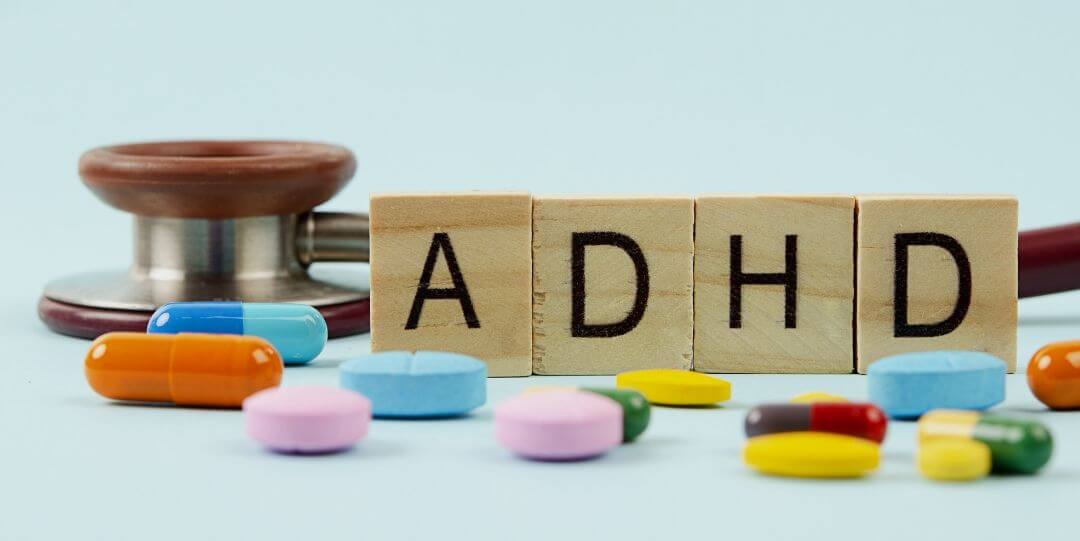For many adults, ADHD shows up as slow task initiation, inconsistent follow-through, time blindness, and “mind drift” in meetings. When impairment is clear and medical causes are ruled out, medication is often the most effective way to normalize attention circuits, provided it’s selected and monitored correctly. This guide compares stimulants vs. non-stimulants, explains XR vs. IR options, and outlines titration, monitoring, and side-effect trade-offs in APA California clinics.
First-Line Pharmacotherapy: Differentiating Methylphenidate and Amphetamine Classes
Stimulants are first-line for adult ADHD because effect sizes are high and benefits appear quickly.
Methylphenidate class
Examples: immediate-release (IR) tablets; extended-release (XR) capsules/tablets; osmotic/laser-drilled tablets; some prodrugs in select markets.
Clinical feel: often described as smoother with slightly less appetite suppression or jitter for some adults.
When we lean this way: co-occurring anxiety or sensitivity to activation, previous good response in childhood, or when amphetamine trials caused mood lability.
Amphetamine class
Examples: mixed amphetamine salts, dextroamphetamine formulations, prodrug lisdexamfetamine (enzyme-activated; lower misuse potential).
Clinical feel: often more potent per milligram; can help “drive” task initiation when methylphenidate was underwhelming.
When we lean this way: prominent inertia/initiation problems, prior robust response, or need for longer coverage with one morning dose.
Class switching is common. Many adults who respond partially to one class respond strongly to the other. We document dose, duration, and tolerability before switching, so choices are data-driven.
Release Profile Strategy: Optimizing XR vs. IR for Coverage and Adherence
XR (extended-release): once-daily dosing, steadier coverage, fewer redoses during the workday. Useful if adherence or privacy is a concern. May cause late-day insomnia if the tail runs long; timing fixes that.
IR (immediate-release): fast onset, flexible split dosing (e.g., morning + noon), and easier to fine-tune initiation vs. afternoon coverage. Requires remembering the second dose.
A common adult plan is XR in the morning plus a small IR booster for late-afternoon tasks, only if needed.
Second-Line Agents: Indications for Atomoxetine and Alpha-2A Agonists
Non-stimulants are crucial in three scenarios: side-effect sensitivity, medical contraindications, or co-occurring conditions that make stimulants suboptimal.
Atomoxetine (selective norepinephrine reuptake inhibitor)
Pros: 24-hour coverage, non-controlled, helpful with anxiety or tics.
Cons: onset over 2–4+ weeks; watch for GI upset, fatigue; rare liver warning; BP/HR monitoring still needed.
Guanfacine XR / Clonidine XR (alpha-2A agonists)
Pros: target hyperarousal and impulsivity, may help sleep and tics; non-controlled.
Cons: sedation, low blood pressure, dizziness, titrate slowly; avoid abrupt stop (rebound BP).
Bupropion (off-label in ADHD)
Pros: can help attention with low energy profiles; antidepressant benefits.
Cons: activating lowers seizure threshold; not ideal if anxiety is prominent.
We sometimes sequence: start a non-stimulant first for anxiety/tics → add low-dose stimulant later. Or begin stimulant and pivot if activation or BP issues arise.
Differential Prescribing: Managing Comorbidities and Contraindications
Anxiety disorders: either treat anxiety first or choose milder starts (methylphenidate or atomoxetine) and watch for activation.
Tics: Atomoxetine or alpha-2A agonists are often preferred; some adults still tolerate stimulants without tic worsening.
Cardiovascular risk: obtain baseline BP/HR (and ECG when history suggests) before dose escalation.
Sleep problems: dose earlier, avoid afternoon boosters, consider switching class or to non-stimulants if insomnia persists.
Substance-use risk or diversion concerns: prefer prodrugs (e.g., lisdexamfetamine), tamper-resistant XR, or non-stimulants; use PDMP checks, small quantities while stabilizing, and pill counts when appropriate.
Side-Effect Mitigation: Clinical Triage of Physiological and Adverse Effects
Appetite/weight: eat protein early, consider shorter tail (IR or different XR), or switch class.
Insomnia: move dose earlier, trim boosters, or change molecule.
Jitter/anxiety: reduce dose, add small XR instead of IR bursts, or switch to methylphenidate/atomoxetine/guanfacine XR.
BP/HR elevation: confirm cuff accuracy; adjust dose/class; address caffeine, decongestants; consider non-stimulant.
Mood dip or irritability: check for rebound (tail too short) vs. overstimulation (dose too high). Adjust timing/dose or switch classes.
GI/sexual side effects (atomoxetine): slow titration, take with food; reassess dose after 2–4 weeks.
You’re never “stuck.” The molecule, dose, and clock are all adjustable levers.
Safety Protocol: Vitals, ECG Screening, and PDMP Monitoring
Across APA California offices, adult ADHD medication care lives in Medication Management with standardized monitoring:
Vitals: BP/HR each visit; weight if appetite changes.
Sleep & appetite: brief check every adjustment.
Interactions: decongestants, caffeine, certain antidepressants; alcohol and cannabis can muddy response.
PDMP review for controlled stimulants; refill cadence matched to stability.
ECG when personal/family cardiac history, syncope, or QT-risk meds are present.
The Titration Algorithm: Data-Driven Sequencing for Optimal Function
If you’ve never tried medication: pick a class (methylphenidate or amphetamine), start low, titrate weekly, measure function.
If you had a partial response: switch classes or change XR↔IR before abandoning stimulants.
If side effects dominate: try atomoxetine or guanfacine XR; reconsider stimulant later once sleep/anxiety are steady.
If there’s SUD/diversion risk: consider prodrugs, tamper-resistant XR, or non-stimulants.
Ready for a precise, monitored plan?
If you’re weighing stimulants vs. non-stimulants, or your current dose isn’t doing the job, book a medical evaluation online. We’ll map a class, dose, and timing that matches your day, then monitor until the results are real.






